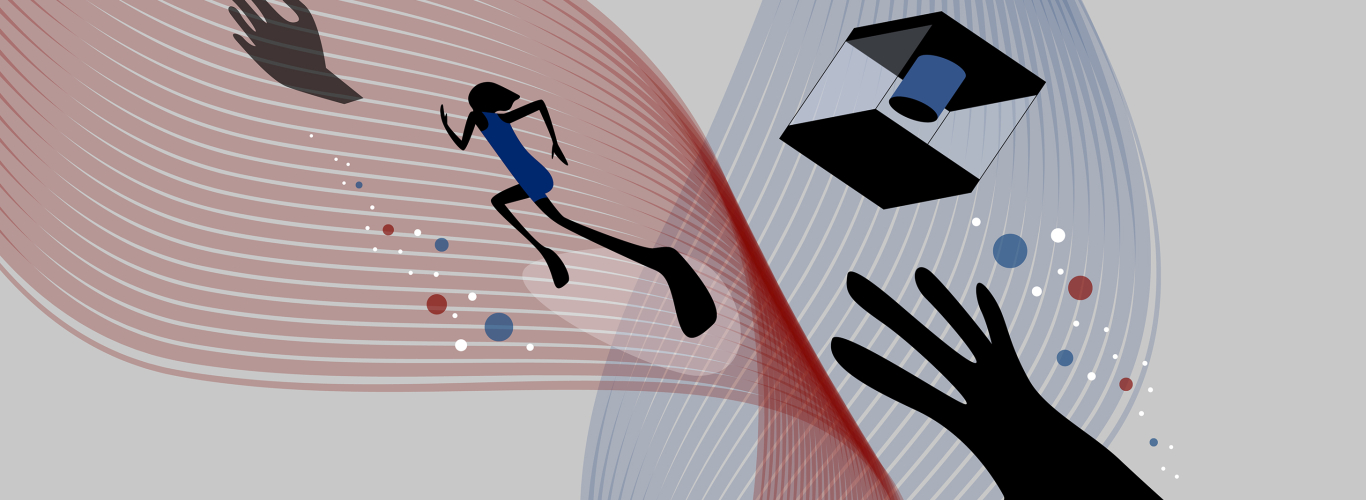Quantum states, which represent the state of affairs of a quantum system, change by a different set of rules than classical states.

“Helping Hands”, a spooky story about a quantum experiment gone awry, has bagged First Prize in the Quantum Shorts flash fiction competition.
The story about mishandled machinery just pipped Runner Up “Quantum et Circenses”, an account of a high-stakes quantum gameshow, in the judges’ estimation.
Judges Chad Orzel, George Musser, Ingrid Jendrzejewski, José Ignacio Latorre, Lindy Orthia, Mariia Mykhailova and Tania De Rozario selected these two winners from the shortlist of ten quantum-inspired stories.
Praising the shortlist, writer and visual artist Tania De Rozario said, “From cats stolen from other parts of the multiverse to questions about what it means to be sentient, these stories were a fun romp through some of the narrative possibilities that quantum mechanics has to offer storytelling.”
A public vote chose “Better, Faster, Stronger, Lonelier”, which imagines a conversation between a classical computer and a quantum computer, for the People’s Choice Prize.
Helping Hands
Cora Valderas from the United States of America combined her love for crime thrillers and horror stories with quantum physics to write “Helping Hands”, drawing inspiration from disasters throughout history involving sensitive equipment. She receives USD 1500 for winning First Prize. This is on top of the shortlist prize and one-year Scientific American digital subscription awarded to all finalists.
Physicist and author Chad Orzel called the story “a cool and creepy set-up”. “This also probably has the best voice of the lot, and some quality jokes about life in academia,” he said.
On her win, Cora said, “It was a wonderful surprise! I had a nice celebratory dance in my car. I wasn’t expecting to be chosen for the shortlist to begin with, and I just feel so honored and happy.”
Quantum et Circenses
Sabrina Patsch from Germany, author of “Quantum et Circenses”, wins the runner up prize of USD 1000. She was inspired by her own research as a PhD student into the quantum Zeno effect, where things can become trapped by the laws of quantum physics.
“I am so happy to have been selected as Runner Up! I was already very excited to be shortlisted, this is the cherry on the cake,” said Sabrina. This is her second time participating in Quantum Shorts. She submitted her very first short story to the competition in 2020.
Researcher Lindy Orthia said, “I love the idea that any new technology gets turned into a gameshow, and this story very cleverly conveys the feeling of perpetual quantum uncertainty for the contestant upon winning or losing.”
Better, Faster, Stronger, Lonelier
An online public vote on the shortlist decided the People’s Choice Prize of USD 500, which goes to Spanish PhD student Álvaro Buendía, author of “Better, Faster, Stronger, Lonelier”. Inspired by the constraint phrase of the competition, “it’s a lot to think about”, he wrote the story about supercomputers, quantum computers and the idea of quantum advantage.
“I’m so glad people liked and voted for my story! It motivates me to keep writing,” said Álvaro.
Congratulations to the winners! Find all the shortlisted stories, and interviews with the shortlisted authors on their inspiration on the Quantum Shorts website.
For their support throughout the competition, we thank our media partners Scientific American and Nature, and our scientific partners, the ARC Centre of Excellence for Engineered Quantum Systems; the Dodd-Walls Centre for Photonic and Quantum Technologies; the Institute for Quantum Computing at the University of Waterloo, Canada; the Institute for Quantum Information and Matter at Caltech; QuTech; and the UK National Quantum Technologies Programme.